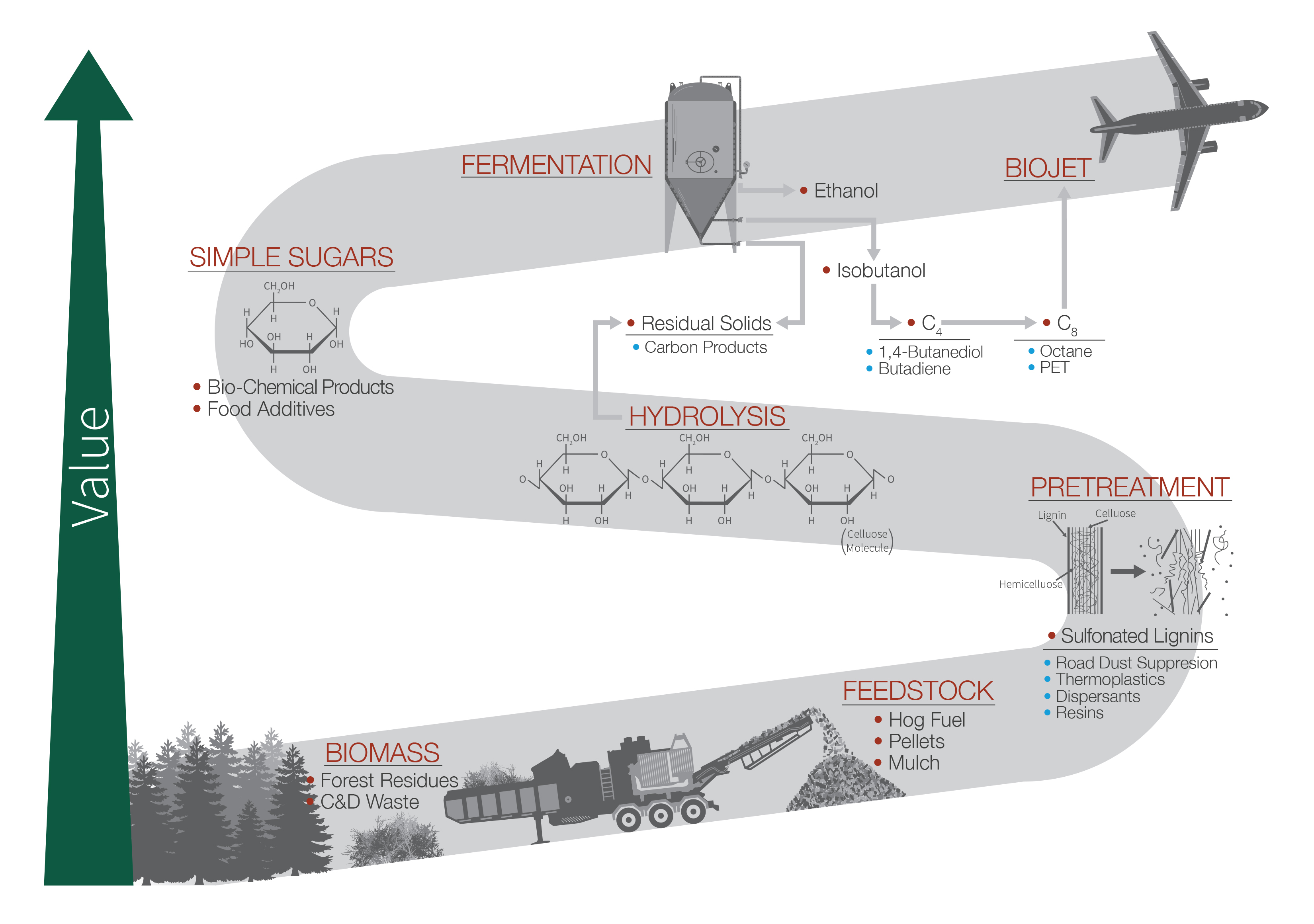FROM WOOD TO JET FUEL AND VALUABLE CHEMICALS
NARA researchers are optimizing processes to convert wood-residuals into chemical products like biojet fuel in a way that is economically, environmentally and technologically feasible. One of the biggest challenges in converting wood biomass to fuel is that wood material has a natural resistance to being broken down, known as lignocellulosic recalcitrance. In recent years, however, researchers have made significant strides in the developing techniques to break down bio-based material so that the simple sugars can be released and used to make chemicals and fuel.
The “break down” process is known as pretreatment, and NARA evaluated and optimized three distinct pretreatment technologies used on forest residuals. One of the pretreatment protocols, mild bisulfite, was chosen as a preferred technology. The mild bisulfite pretreatment process is energy efficient, effective and can be adapted for use with existing pulp mill infrastructure.
Pretreatment is used to separate the simple sugars from the lignin-rich material. To convert the simple sugars into chemicals and fuel, NARA affiliate Gevo, Inc., a Colorado-based renewable chemicals and advanced biofuels company, uses a yeast biocatalyst that converts the simple sugars into isobutanol. The renewable isobutanol can then be converted into multiple products including biojet fuel using chemical processes that are used in the refining industry. Biojet fuel made from Gevo’s isobutanol is the same as petrochemical jet fuel except that the carbon source is renewable.
“By using woody biomass feedstocks, we will be expanding the options for renewable feedstocks and fuels,” says Andrew C. Hawkins, Team Leader with Gevo Inc., who is coordinating conversion efforts.
“Isobutanol provides several advantages over ethanol as an intermediate step to bio-based fuels”, says Hawkins. Unlike ethanol, isobutanol doesn’t react with water and can be transported via the same pipeline system used for petroleum products. Because it reacts with water, ethanol corrodes pipelines and has to be transported by truck, rail, or barge.
“Furthermore”, says Hawkins, “isobutanol can serve as a platform for making other valuable products, including polymers, solvents in paints, and renewable rubber”. The group aims to develop the conversion process at laboratory scale. Later, they will scale up production to a 40,000-liter demonstration scale. The isobutanol will be converted to a jet fuel blend stock and then tested.

Other Products From Wood Residuals
When wood residuals are pretreated and the simple sugars are used to make chemical and fuel products, there remains a substantial amount of lignin-rich material left over. NARA researchers are developing products such as activated carbon, epoxies and thermal plastics from the lignin-rich material. This product development is an essential component to establish an economically sustainable way of generating value from wood residuals.
For More Information
- NARA’s cumulative reports